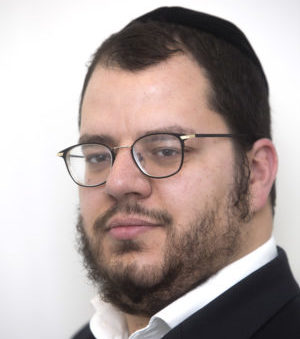Setting Souls Aflame

From the very first tish, the chassidim realized this would be something different. Toldos Avraham Yitzchak would forge a new path and ignite neshamos, not only at the dramatic grand finale in Meron on Lag B’omer, but all year round

(Photos: Mattis Goldberg)
From the very first tish, the chassidim realized this would be something different — the rigorous avodah of Toldos Aharon blended with the warmth and joy of Vizhnitz, laced with the Rebbe’s own intense strivings. Toldos Avraham Yitzchak would forge a new path and ignite neshamos, not only at the dramatic grand finale in Meron on Lag B’omer, but all year round
L ate in the day of Lag B’omer as the sky over the mountaintops of Meron begins to darken and the energy and commotion of the previous 24 hours start to wane they arrive.
A flood of chassidim. Rays of setting sun and the reflection of the fire bathe them — in their golden beketshes — in a sea of light.
It’s almost shkiah as the Toldos Avraham Yitzchak Rebbe having arrived from Jerusalem by helicopter ascends the platform in the clearing far to the west of the packed tziyun to ignite the holy hadlakah in honor of Rabi Shimon bar Yochai. The Rebbe looks out at his chassidim seated among the thousands who’ve already claimed their space on the bleachers for what’s become the highlight of the day’s festivities. He rests his eyes on each of them a community of melamdim and sofrim shopkeepers and butchers and bookbinders interspersed with other chassidim litvishe bochurim visitors from abroad and Israelis who — at least outwardly — appear far from any chassidus.
The Rebbe’s gaze reflects an all-encompassing love as he looks out over the massive crowd. But then just before he extends the torch he will look to another group men whose faces are painted with intensity. Before the Rebbe connects with the Tanna Rabi Shimon who opened the wellsprings of the hidden Torah so many centuries ago he will concentrate on this group a chaburah of lions who’ve pierced the veil and begun their ascent up the rungs of the ladder of pnimiyus haTorah.
They are the Rebbe’s chosen yungeleit a select brigade within the army he created alone fusing the inspiration of his forbears with his own intense spiritual path.
Questions and Answers
It was just over 20 years ago, on Chanukah of 1996. Following months of illness, the Toldos Aharon Rebbe, Rav Avraham Yitzchak Kahan ztz”l, passed away — and his chassidim, so reliant on the Rebbe’s leadership and support, felt like a flock of searching sheep with no shepherd to guide them.
Oops! We could not locate your form.













